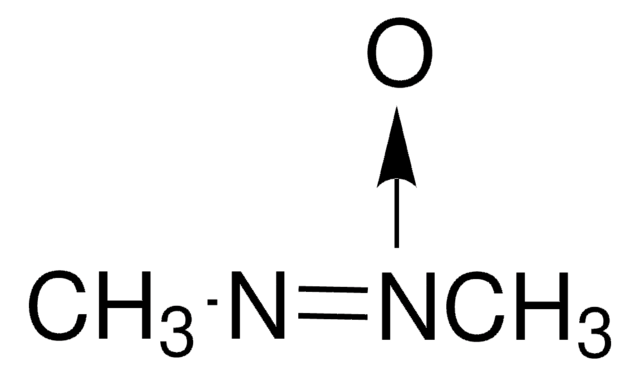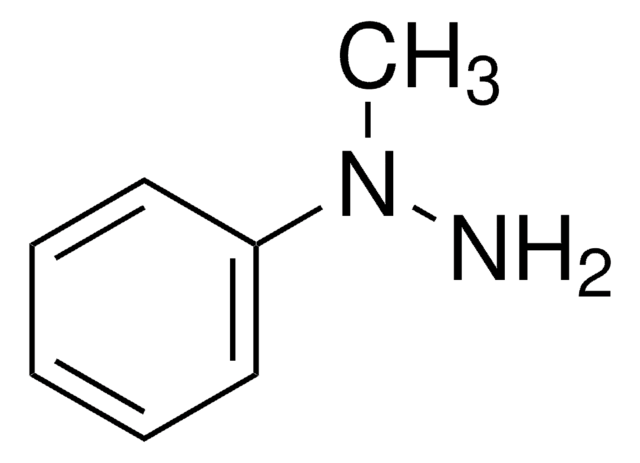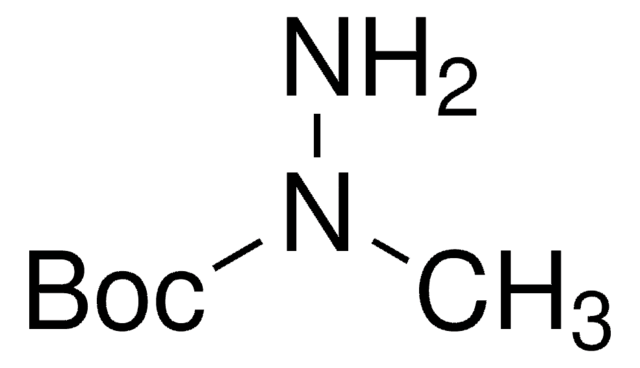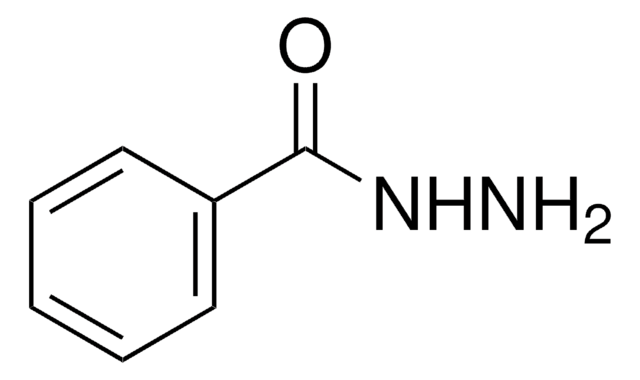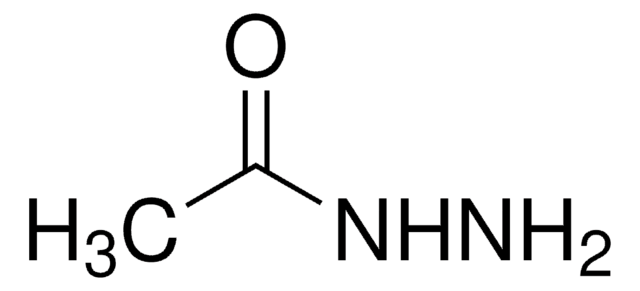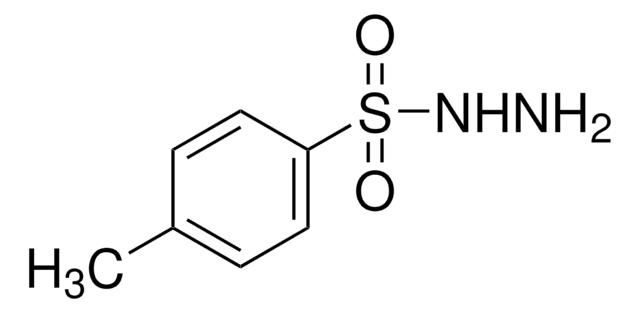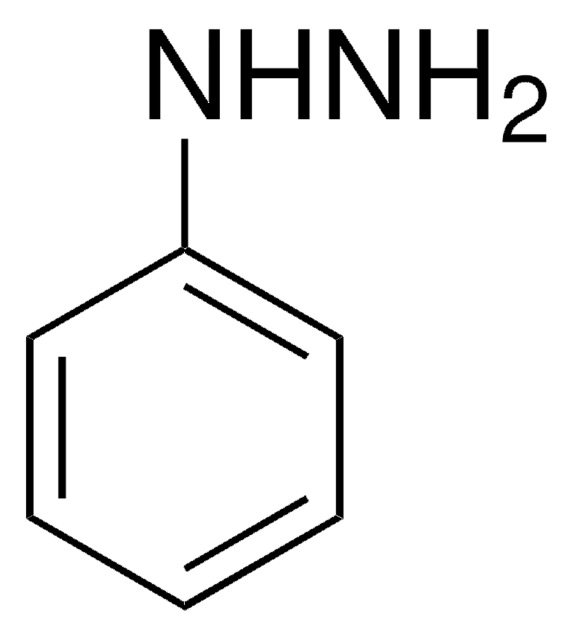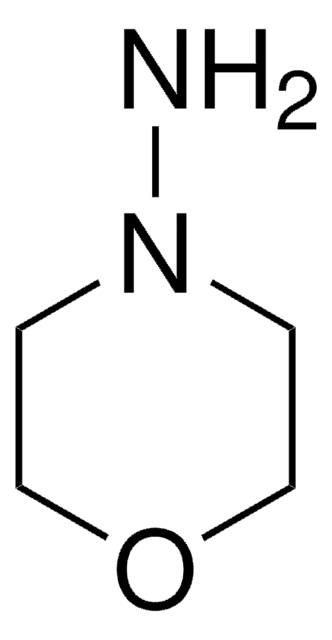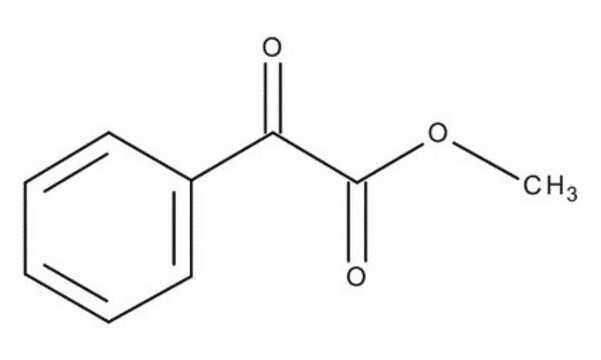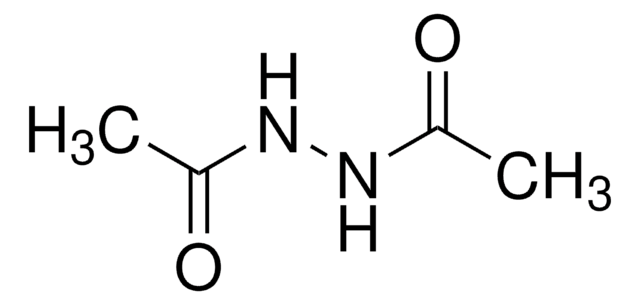D161608
N,N-Dimethylhydrazine
98%
Synonyme(s) :
asym-Dimethylhydrazine
About This Item
Produits recommandés
Densité de vapeur
1.94 (vs air)
Pression de vapeur
103 mmHg ( 20 °C)
Pureté
98%
Forme
liquid
Température d'inflammation spontanée
478 °F
Limite d'explosivité
95 %
Indice de réfraction
n20/D 1.4075 (lit.)
Point d'ébullition
60-62 °C (lit.)
Densité
0.79 g/mL at 20 °C (lit.)
Température de stockage
2-8°C
Chaîne SMILES
CN(C)N
InChI
1S/C2H8N2/c1-4(2)3/h3H2,1-2H3
Clé InChI
RHUYHJGZWVXEHW-UHFFFAOYSA-N
Vous recherchez des produits similaires ? Visite Guide de comparaison des produits
Application
- β-Naphthol via radical amination to form 1-amino-2-naphthol.
- 2-Chloro- and 2,2-dichloro-(bromo)vinyl ketones via regioselective heterocyclization to form 3-substituted 1-methyl(5-halo)pyrazoles.
- Terminal alkynes in the presence of TpRuCl(PPh3)2 (Tp = tris(pyrazolyl)borate) to form nitriles.
N,N-Dimethylhydrazine along with ferric chloride hexahydrate forms an effective reduction system for:
- Synthesizing DNA binding pyrrolo[2,1-c][1,4]benzodiazepine (PBD) imines via reductive cyclization of the corresponding nitro aldehyde.
- Transforming a variety of nitroarenes and azido compounds into the corresponding anilines and amino compounds, respectively.
Actions biochimiques/physiologiques
Mention d'avertissement
Danger
Mentions de danger
Classification des risques
Acute Tox. 3 Dermal - Acute Tox. 3 Inhalation - Acute Tox. 3 Oral - Aquatic Chronic 2 - Carc. 1B - Eye Dam. 1 - Flam. Liq. 2 - Skin Corr. 1B - STOT SE 3
Organes cibles
Respiratory system
Code de la classe de stockage
3 - Flammable liquids
Classe de danger pour l'eau (WGK)
WGK 3
Point d'éclair (°F)
14.0 °F - closed cup
Point d'éclair (°C)
-10 °C - closed cup
Équipement de protection individuelle
Faceshields, Gloves, Goggles
Faites votre choix parmi les versions les plus récentes :
Déjà en possession de ce produit ?
Retrouvez la documentation relative aux produits que vous avez récemment achetés dans la Bibliothèque de documents.
Les clients ont également consulté
Notre équipe de scientifiques dispose d'une expérience dans tous les secteurs de la recherche, notamment en sciences de la vie, science des matériaux, synthèse chimique, chromatographie, analyse et dans de nombreux autres domaines..
Contacter notre Service technique
